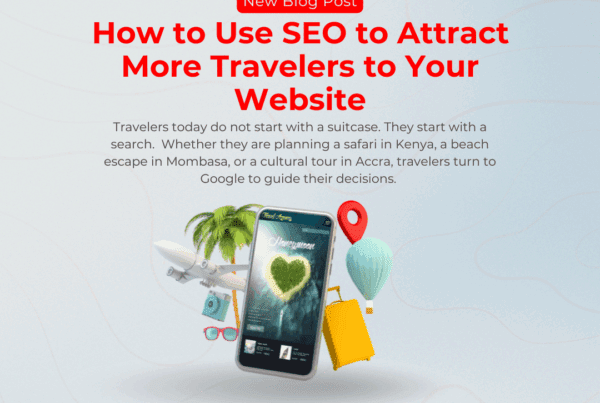Can I tell you a secret? The best kind of SEO strategy incorporates both On-page and Off-page SEO practices. Take it from a seasoned digital marketing agency with years of experience helping businesses and institutions in different fields build their SEO rankings. Not to brag, but, we are the best!
Don’t look at these two kinds of SEO practices as two totally different elements that work separately, but as elements that work together for “the common good of your brand.”
Sure, peanut butter is great, and so is toast on it’s own but what if you put the two together? Pure magic! I hope you get the idea.
In case you’re still a bit lost on what SEO is, you can read our blog here to get a better understanding of what it is and why it’s important to incorporate it into your digital marketing strategy.
There are thousands of blogs out there, and simply just having amazing content will definitely not cut it for your website.
SEO is becoming more and more technical by the day, but with these amazing insights from your favorite creative agency at Charleson, you can become a pro in no time!
A lot of people shy away from the technical part of SEO and like to focus on just the editorial content of their site, but it leaves them ranking poorly and losing website traffic.
SEO is becoming more and more technical by the day, and it’s important for us to stay up to date on the trends that are generated by user behaviour.
Let’s start by defining what On-page and Off-page SEO is;

On-page SEO is any optimization done on your website pages to enable your site to rank higher on the search engine results page.
Off-page SEO is any optimization that is done outside of your own website to impact your rankings within search engine results pages.
Now that we have the definitions out of the way, we can get into the best practices to achieve SEO success.
Let’s get started!
On page SEO Practices

1. Meta Descriptions
This is a snippet of about 155 characters (an HTML tag) that summarises a page’s content. It appears below the title and URL. They’re basically meant to entice your readers to click on your page, and to choose your site over another. This is an idea of what they look like below.

Meta description checklist
- Keywords: Do make sure your most important keywords for the webpage show up in the meta description. Often search engines will highlight in bold where it finds the searcher’s query in your snippet.
- Write legible, readable copy: This is essential. Keyword stuffing your meta description is bad and it doesn’t help the searcher as they’ll assume your result leads to a spammy website. Make sure your description reads like a normal, human-written sentence.
- Treat the meta description as if it’s an advert for your web-page: Make it as compelling and as relevant as possible. The description MUST match the content on the page, but you should also make it as appealing as possible.
- Length: A meta description should be no longer than 135 – 160 characters long (although Google has recently been testing longer snippets). Any longer and search engines will chop the end off, so make sure any important keywords are nearer the front.
- Do not duplicate meta descriptions: As with title tags, the meta descriptions must be written differently for every page. Google may penalize you for mass duplicating your meta descriptions.
- Consider using rich snippets: By using schema markup you can add elements to the snippets to increase their appeal. For instance: star ratings, customer ratings, product information, calorie counts, etc.
2. Website URL
URL stands for Uniform Resource Locator ( by a show of hands, how many did not actually know the meaning of it? You’re welcome!), and is nothing more than the address of a specific website, page, or file on the internet.
You can optimize your URL by ensuring they have relevant keywords, and should be descriptive of a page’s content.
3. Internal links
These are hyperlinks that point to another page on the same website.
They make it easier for search engines to understand your site and pages within, resulting in a higher ranking.
Each of your site pages should link back to its primary page as well as to the homepage.
4. Title Tags
This is your page’s message to the world.
They work hand in hand with the meta description. Your title tag should be descriptive about the page, optimized with a keyword, and under 60 characters long.

5. Image Alt text
Also known as “alt tags”, are image text alternatives for search engines to better understand what’s on your website, helping them crawl and rank your website. When writing your alt tags you should make sure that your text is;
- Avoids keyword stuffing
- Accurate
- Concise
- Avoids stating that it’s an image
- Lastly, avoids having unnecessary text
6. Site speed
It’s not surprising that 47% of people expect a page to load within just two seconds! Who wants a slow-loading page anyway, right? They’re quite annoying, aren’t they?
You need to ensure your website pages have a fast loading speed to avoid a low ranking.
Slow loading pages have high bounce rates and as a result, search engines will rank these kinds of pages lower. You should take some notes on our tips on how to speed up your website
7. Responsiveness
This is a design element that seeks to ensure that your web pages are displaying correctly across all types of devices.
It’s super important because more and more people today are using their mobile phones for online search, meaning your web pages need to look good on mobile.
8. Headings
These are the titles within your text.
Your headings should focus on relevant and descriptive words, while optimizing them with the right keywords.
Charleson Tip: Remember not to repeat keywords or phrases throughout a post!
Off-Page SEO Practices

1. Backlinks
Backlinks, also called inbound links, are links created when one website links to another. In layman’s terms, these are links that direct people to your page from other online sources. There are various ways to earn backlinks from other sources; Read more about backlinks
- Write guest blogs to promote yourself as an industry expert
- Write content that mentions influencers in your field
- Try to find blogs in your field with broken links, and then suggest replacing the broken link with content you’ve written on the same subject
- Review sites
- Connect your Facebook page to your website
- Take advantage of the popularity of infographics by creating lots of them
2. Domain Authority
This is a score that calculates how “authoritative” your website is compared to other sites and how much search engines can trust you.
It’s affected by the period of time of the domain name, the history of the domain name, and the number of referring domains. The more links your website has, the higher your page’s rank. Though remember that link quality is now more important than link quantity, so ensure you create shareable content that will easily earn you valuable links, improving your off-page SEO.
- Create awesome content
- Social media shares of your content that generate links
- Outreach emails to influencers in your industry
- Guest blogging
Conclusion
With On-page SEO, you build a site that’s tailored to specific keywords, while with Off-page SEO, you make sure people are aware of the content you’re creating. Now that you know these SEO best practices, you can stay ahead of the game with an excellent SEO strategy that incorporates both On-page and Off-page SEO practices. Looking to build your SEO ranking and have no ideas where to start? You’re in luck! Charleson‘s SEO team is a phone call/email away to help you begin your journey to the top of the SEO ranking ladder.
Don’t forget to Subscribe to our blog for more helpful digital marketing insights.
Until next time, cheers!




